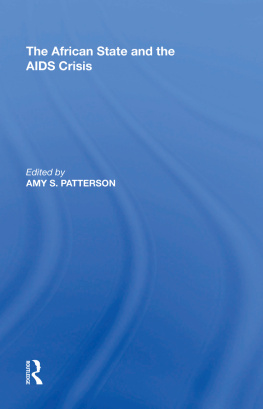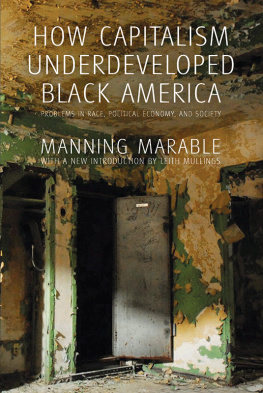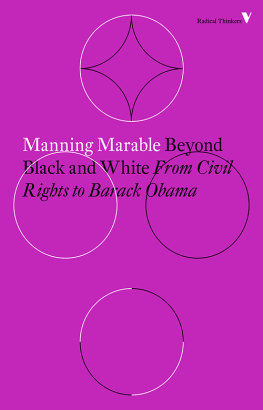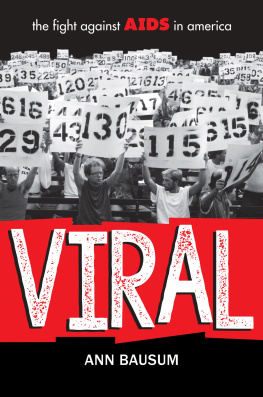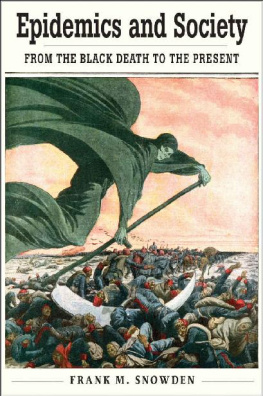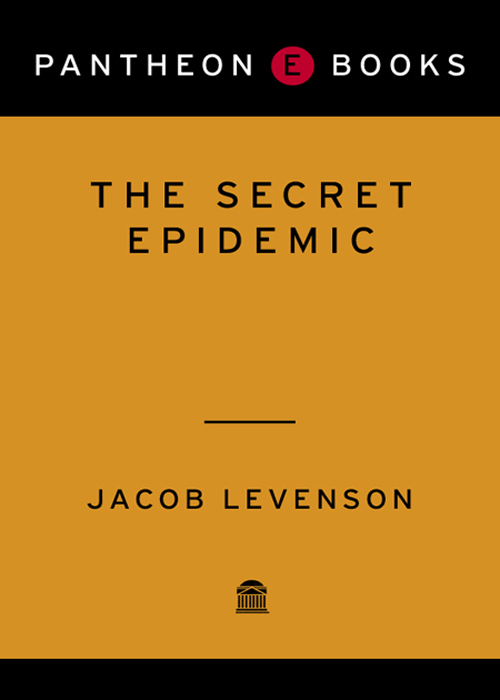
Contents
The
Secret
Epidemic
The Story of AIDS and Black America
Jacob Levenson

Pantheon Books, New York
This book is for Kazandra,
with love, for her insight,
courage, patience, and honesty.
And to my parents, George and Vicki,
for their guidance and inspiration.
Acknowledgments
My deepest gratitude goes to each person who appears in the pages of this book. Not only did they give generously of their time, but they displayed courage in openly sharing the intimate details of their lives and work in service of a fuller conversation about some of the most difficult and enduring issues facing this country. The list of people who helped shape my thinking on the epidemic but whose stories I did not explore in the manuscript is too extensive to write here. There are a few, however, whom I wish to acknowledge at this point. Kenneth Raphael, the first infected person I asked to participate in this project, died of AIDS in the early stages of my research. However, his story, which I told in the proposal for this book, was instrumental in moving first my agent, and then my editor, to take on this project. Thanks also to David Schulman, an AIDS attorney in Los Angeles, who patiently tutored me over many phone calls on the history of the epidemic; Robert Sember, a South African, whose elegantly articulated ideas on AIDS in the American South helped me see freshly the richness and texture of the material I gathered in Alabama; Pastor Preston Washington of Harlem, who gave me a raw glimpse of what the epidemic looked like from behind the pulpit; Jane Silver, who gathered a trove of documents that both informed and corroborated my reporting on needle exchange; and Sean Strub, who advocated for this book in the foundation world.
Every idea requires time for its fullest development. I am deeply grateful to the Open Society Institute for providing the critical funding that allowed me to devote my undivided attention to this subject.
While all books are truly collaborations between a writer and their wider community of colleagues and peers, this axiom is never more true than for a first book. The professional expertise and wisdom of every one of the following are present in these pages. Andrew Miller, a true editor in the classic sense, who took a risk by going to bat for this book at Grove Atlantic, took another by taking it with him to Pantheon, and then dedicated an unimaginable number of hours to insightfully poring over every sentence in the manuscript; Kris Dahl, my extraordinary agent, who took a flier on me when I had no track record and gave me four years of sage advice, as well as representation above and beyond any rational expectation, all the while exhibiting humor and patiencewithout her this book would not have been published; Samuel G. Freedman, my teacher and first editor, who imagined this book when I approached him with the glimmer of an idea, then lit the tunnel with his vision, and unmercifully closed the door behind me; Brad Foss, my confidant, fellow writer, editor, critic, and true friend, who helped burnish every chapter; Mary Kay Martin, who gave generously and gently of her time and editorial pen to help my sentences read with the rhythm in which I heard them in my head; Jonathan Schorr, who showed me that it could be done, and then encouraged me to join him at the finish line; G. R. Anderson Jr., my brother in mind, who reminded me what I do well, and then showed me his writing, unknowingly challenging me to do better; Sonji Jacobs, who gave of her time and insight in helping me craft the proposal; Gayane Keshishyan and Kerry Donahue, first-rate journalists and friends, who offered unfailing insight and humor at my lowest moments; Michael Shapiro, who gave me the first sentence of my epilogue when I feared that I didnt even have a book; Roger Cohn, for believing in this topic and giving me my first magazine assignment to write about it; the entire staff at Pantheon and Random House, every one of whom treated this book with extraordinary care and attention to detail; the editors at The Oxford American, who helped make the Alabama material come alive on the page; and Richard Scheinin, who ushered me into journalism, and then into book writing.
Ultimately, however, this book belongs to my friends and family, a few of whom went far and above the call of duty to support, encourage, and whip me through these four years: Abra Levenson, who, at the end, flew across the country on three days notice and worked twelve hours a day to help me finish the project; Rhys Levenson, who never wavered and who taught me to take the heat; Judy and Steve Ross, who housed and fed me too many times to count; Scott Brenner, who gave generously of his invaluable expertise and time; Lucille Levenson, who supported first my father and then myself in taking on challenging projects; Peter Lundgren, for his generosity, love, and inspiration; Vic Lundgren, who set the standard; Paul Bracke, who patiently and honestly guided me around some of the most difficult obstacles; Jean-Paul Leonard, who helped make it possible for me to live in New York and also granted me a computer to complete the book; the generous crew at Angry Monkey for use of their office space and equipment; Wes Lovy, who first told me to take on this topic and then advised me to make it into a book; Ellie Carmody, who many years ago helped me believe in my convictions; Bonnie Settlage, who drew me through the wilderness; and Lawrence Cohen, a medical anthropologist, who shaped my approach to journalism.
PROLOGUE
Tornado Road
1996
S ARA JACKSON EASED HER husband Jacks dirt-brown Buick Oldsmobile down Tornado Road, which stretched out before her like a red clay river, rippling with thick waves of tire tracks and dipped with shallow pools from the footprints of her cousins, aunts, and uncles, who had lived in this countryside for about as long as anyone could remember. Tall pine trees leaned in over the car, flickering Alabama sunshine through her dusty windshield. The forest soon gave way to a clearing. On the left was a rusted barbed-wire fence strung across an expanse of grass.
Sara rolled the Buicks steering wheel to the right and pulled up in front of her parents trailer. It was the summer of 1996. She was only sixteen and was entering the eleventh grade, but she and Jack had just married and already moved into their own house a hundred yards farther down the road. They called it the green house. Maybe once it had suggested such a bucolic sentiment, but the southern heat and rain had stripped the paint and warped the wallboards and window frames, so that from the outside it had the dreamy look of a reflection off the waters of a still pond.
Sara couldnt quite articulate why she liked it better here than in the city. Her parents had recently moved her and her younger sister Rebecca back to Choctaw County after they had spent most of their childhood in Mobile. There was less crack, violence, and gang activity in the country. But the presence or absence of those social ills didnt quite capture the innate qualities that distinguished the two places. The country seemed to retain a stability that calmed her. She shared enough blood with the black families who lived in the constellations of trailers and small homes sprinkled across the county that she could comfortably call a good portion of them kin. Her grandmother, who lived in a cottage across from the green house, had bought the land they lived on, with the help of a white family in whose home shed worked. There was plenty of fishing for trout in the weave of creeks that rushed through the surrounding forest. And there were whole stretches of yard for growing vegetables.
Next page

